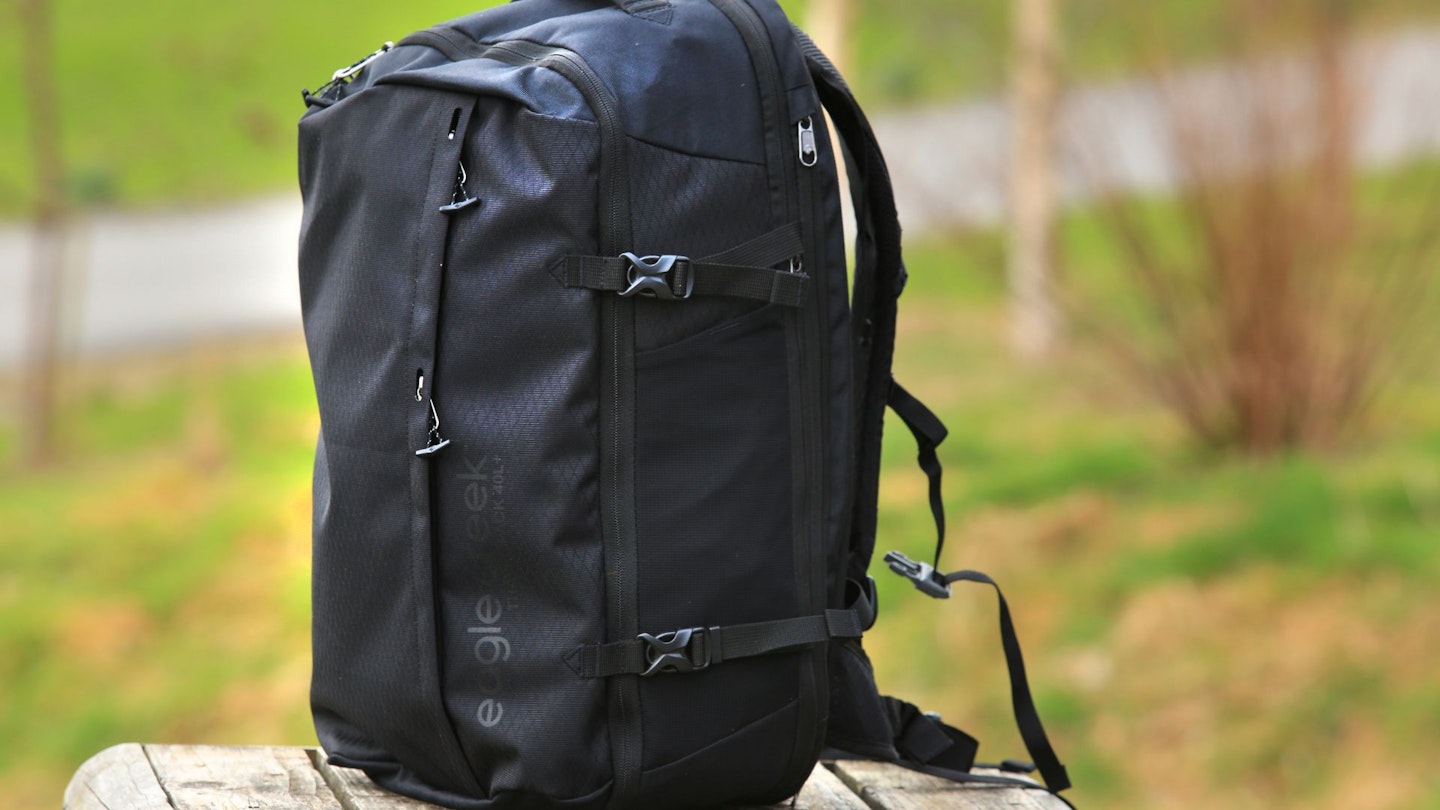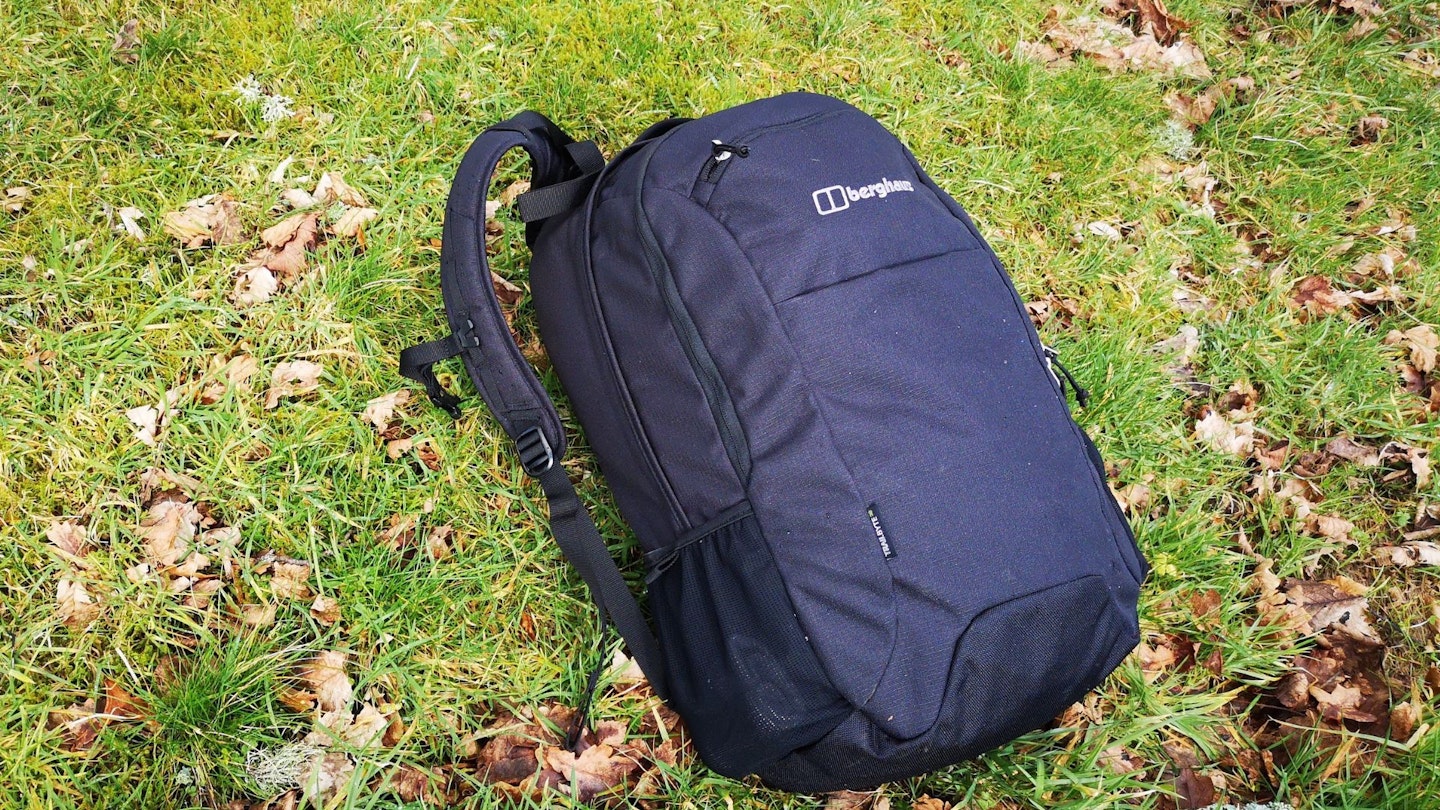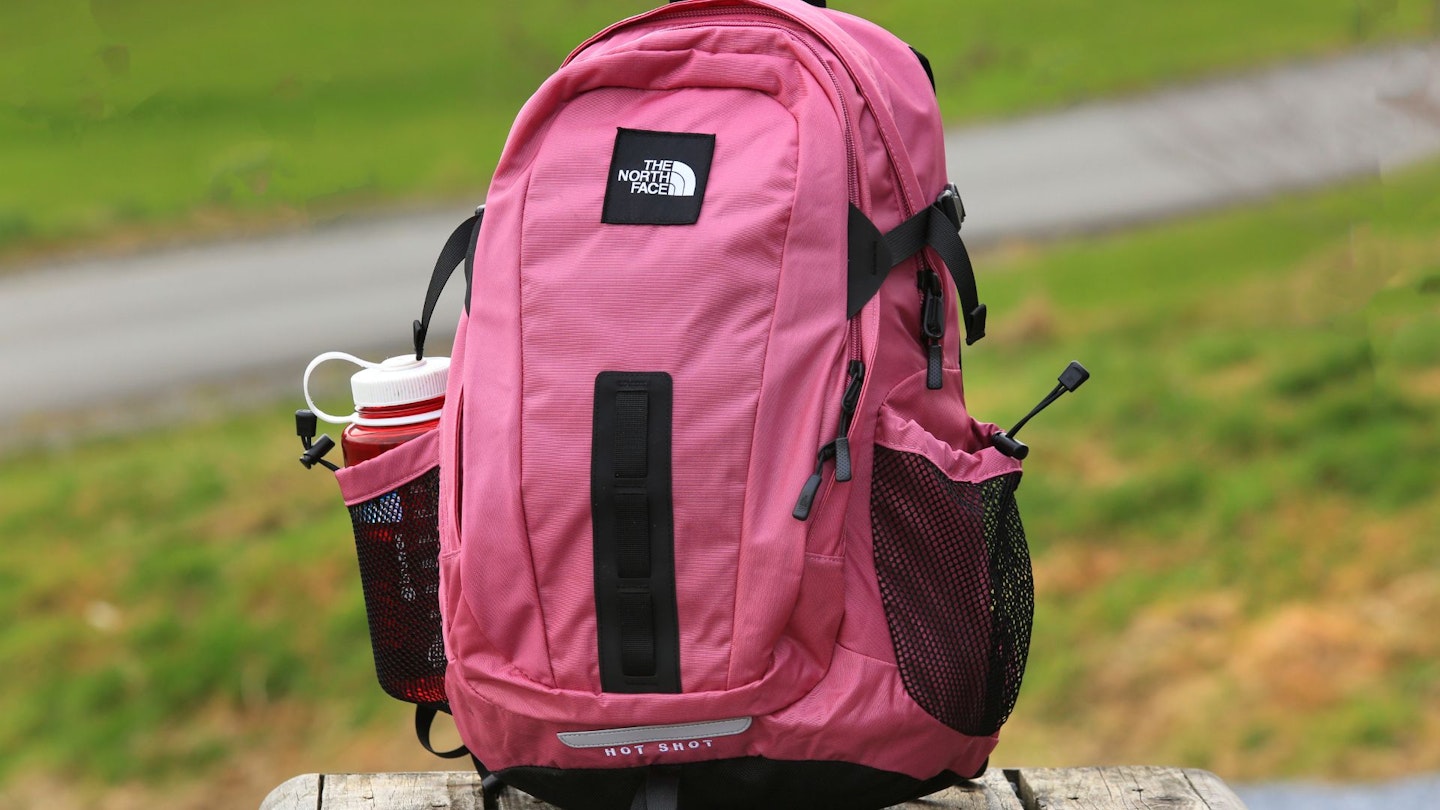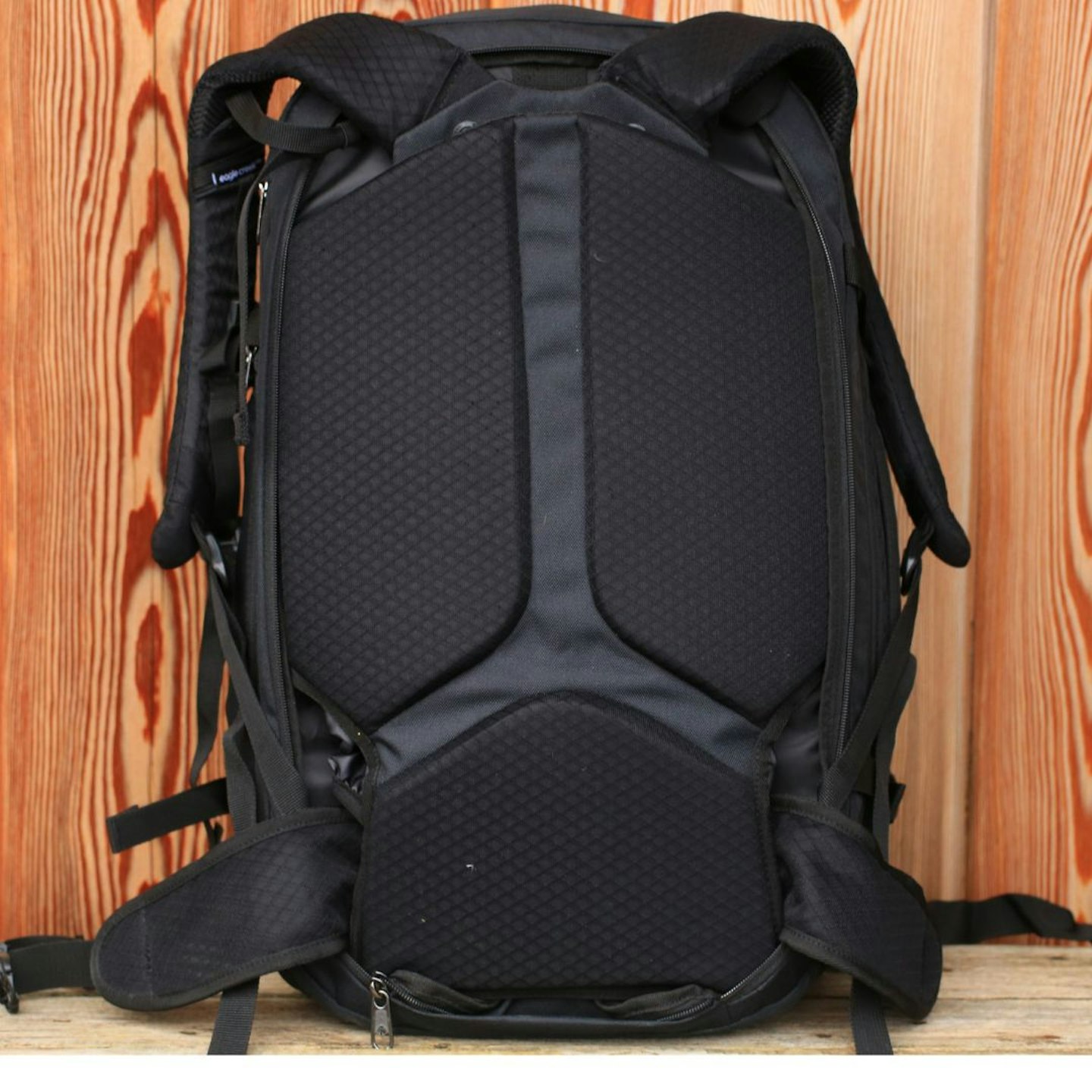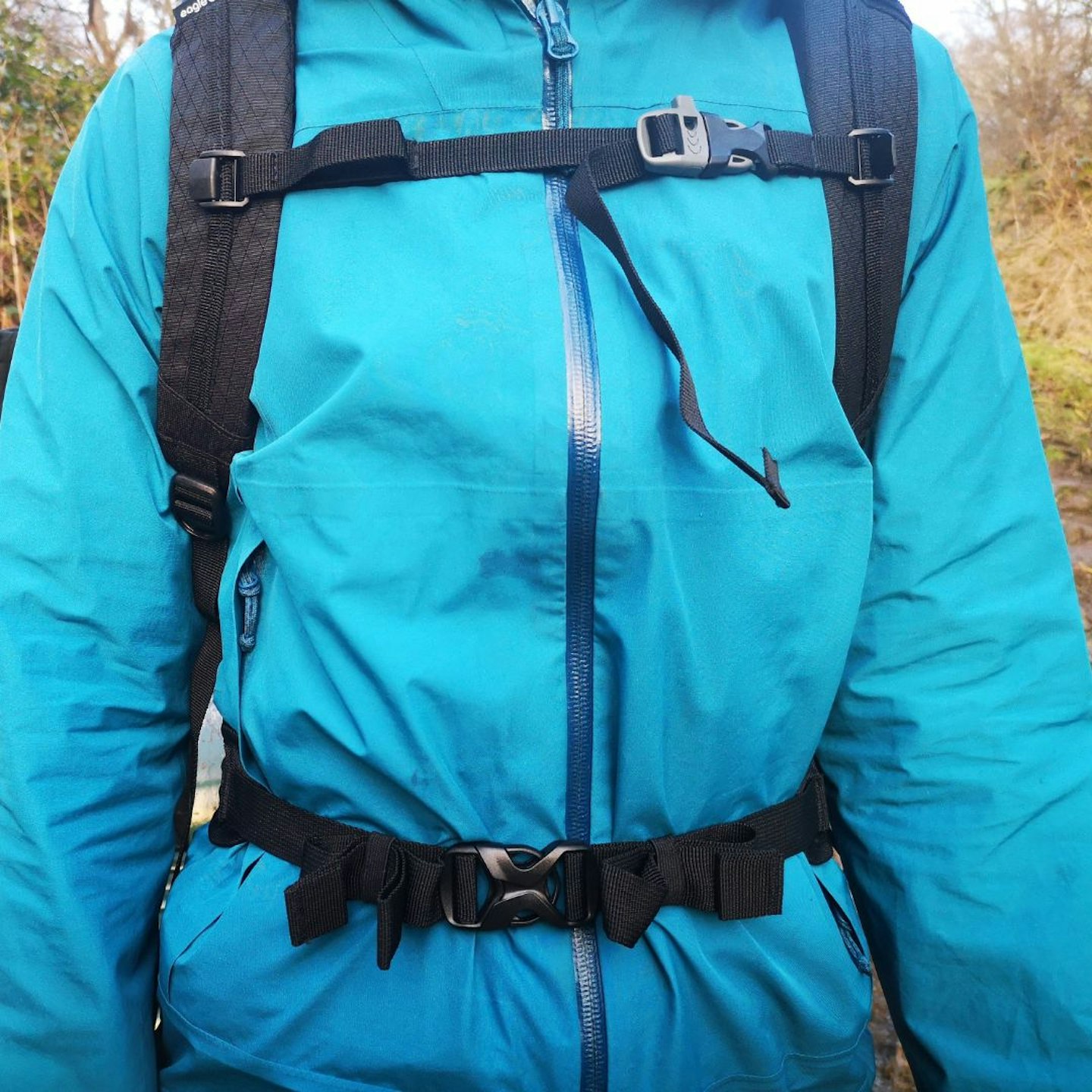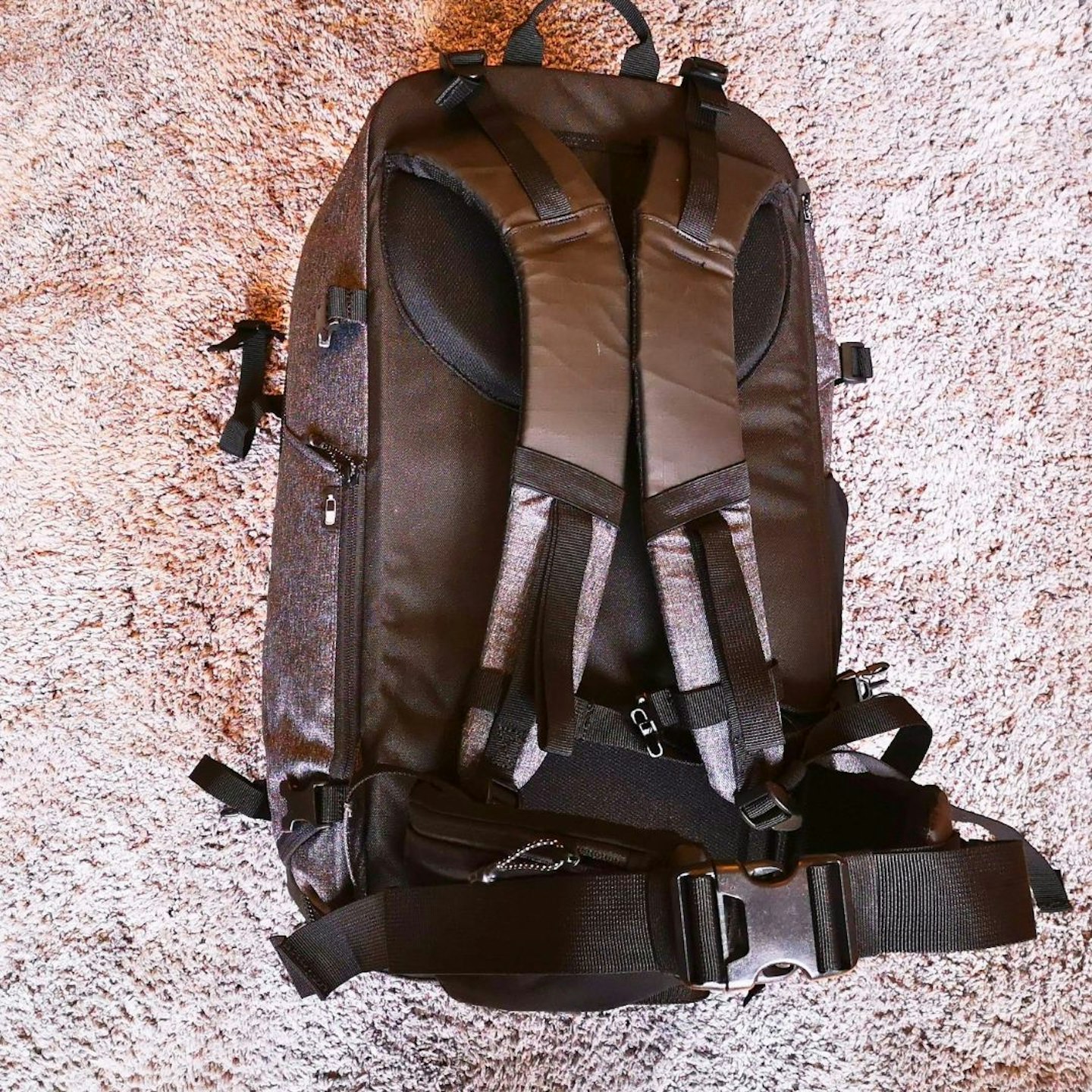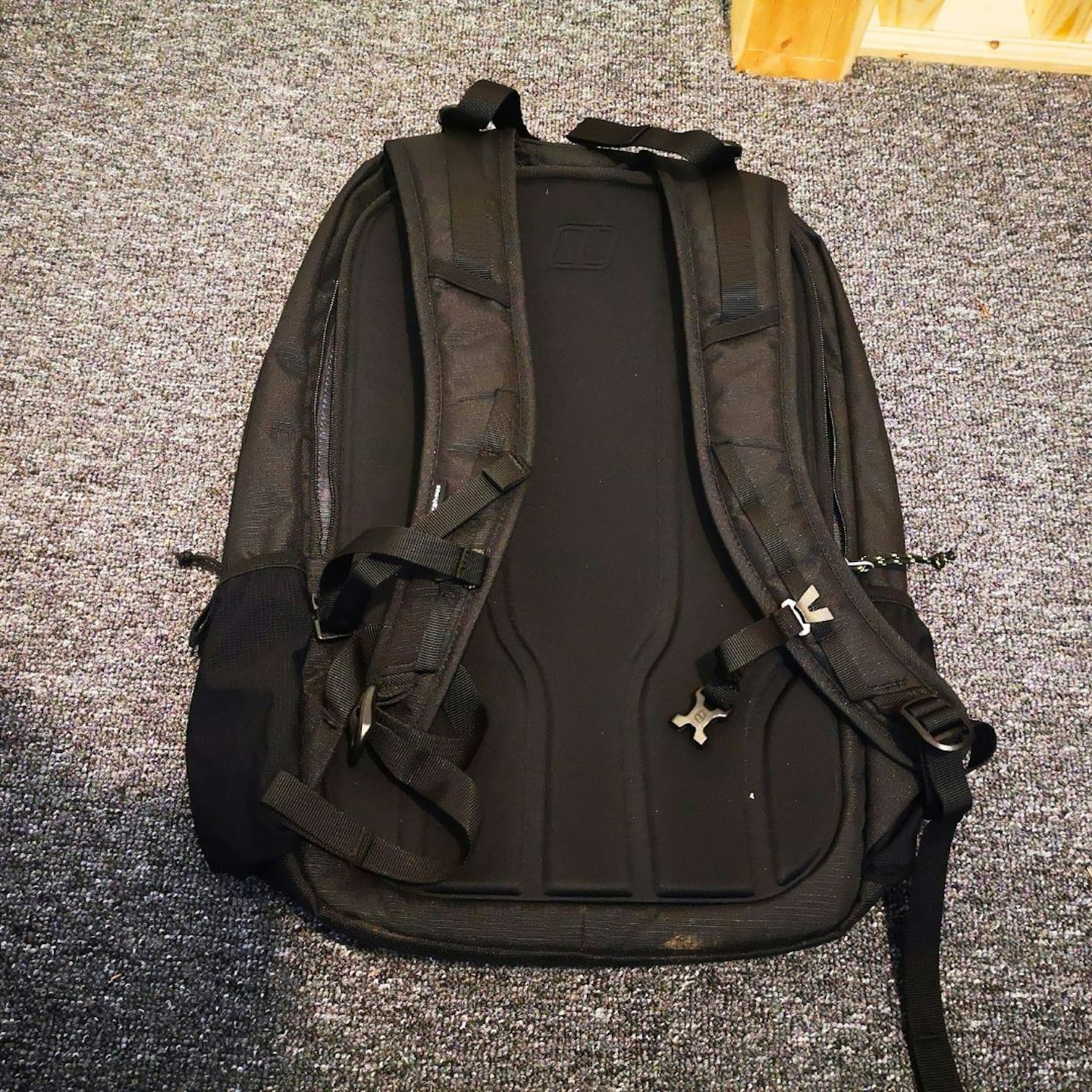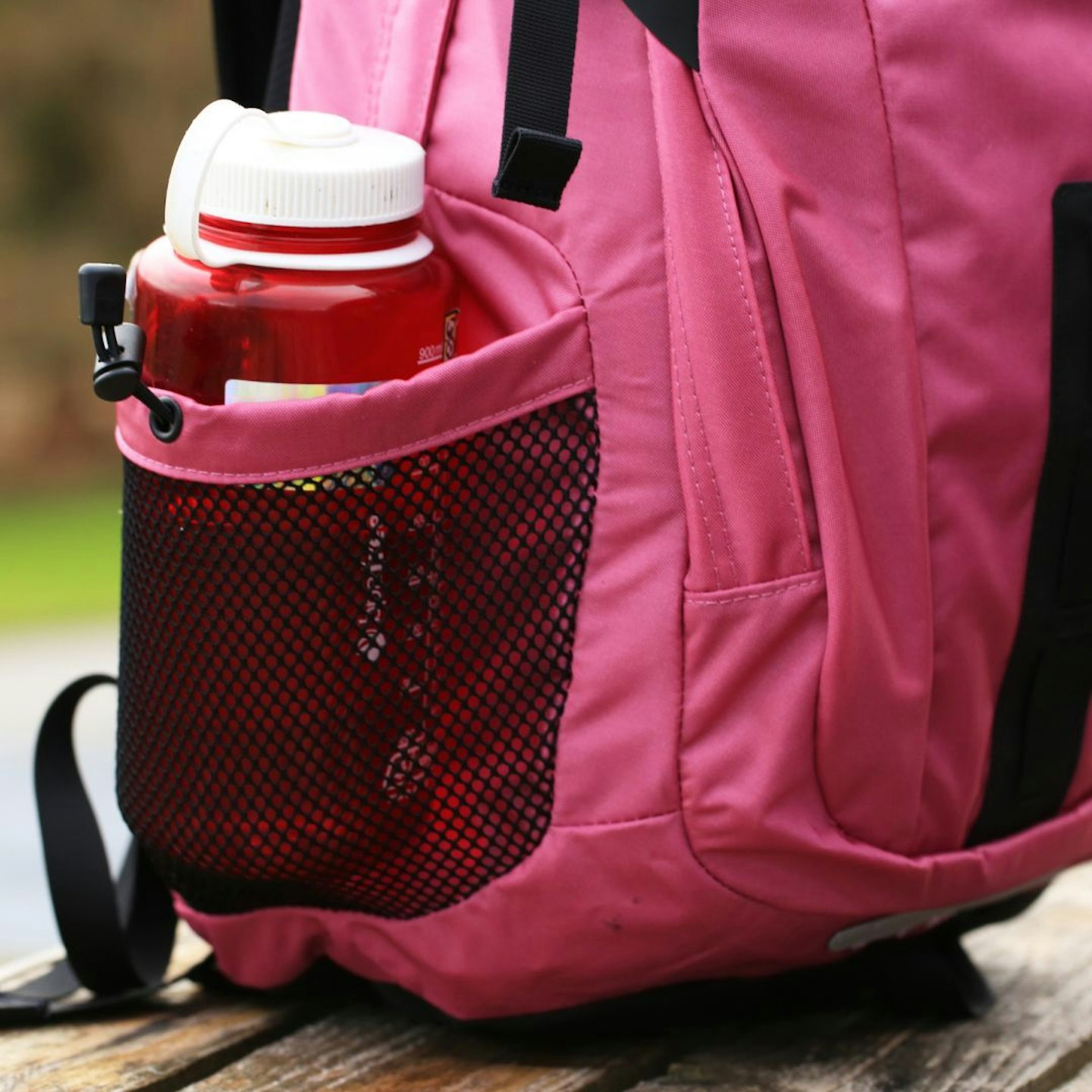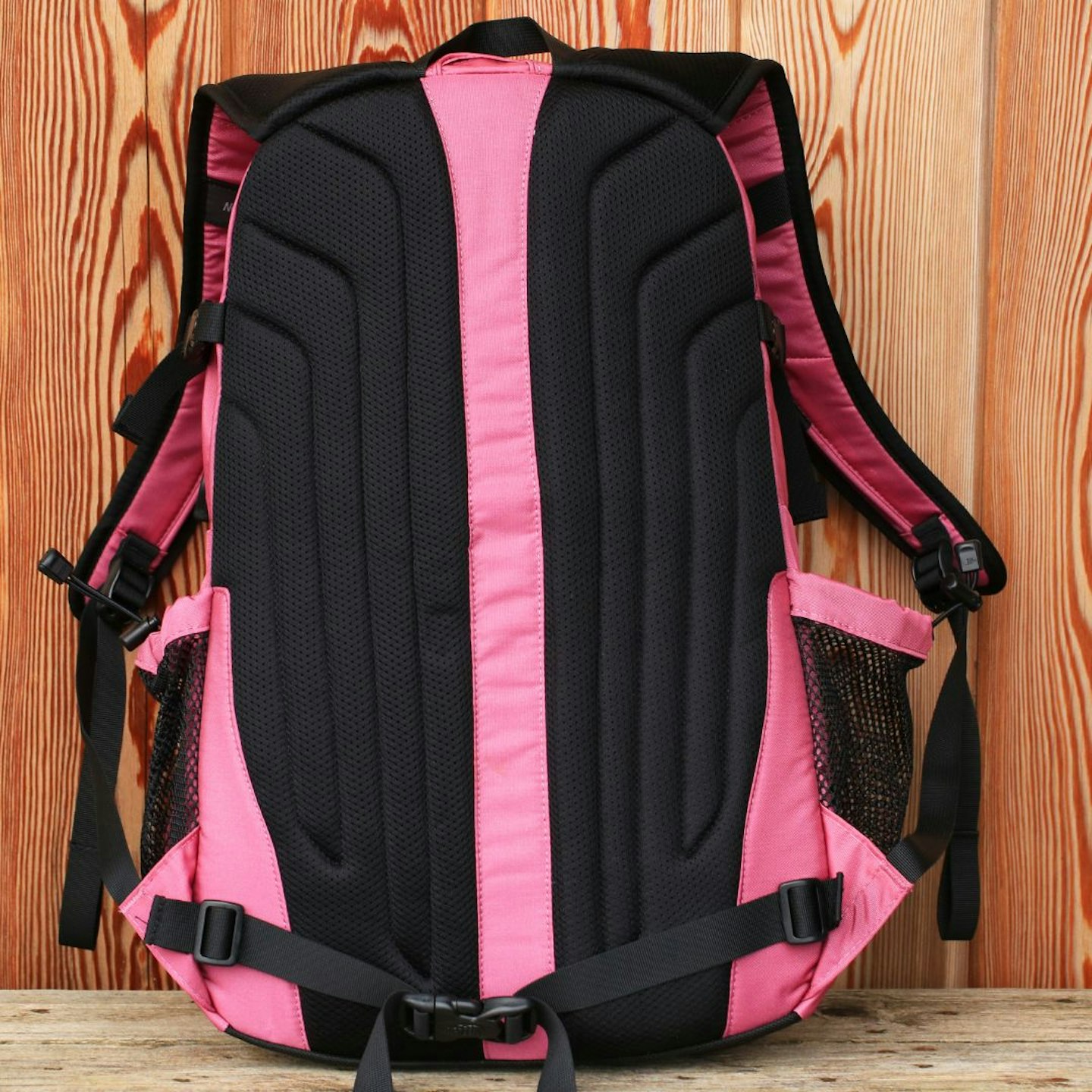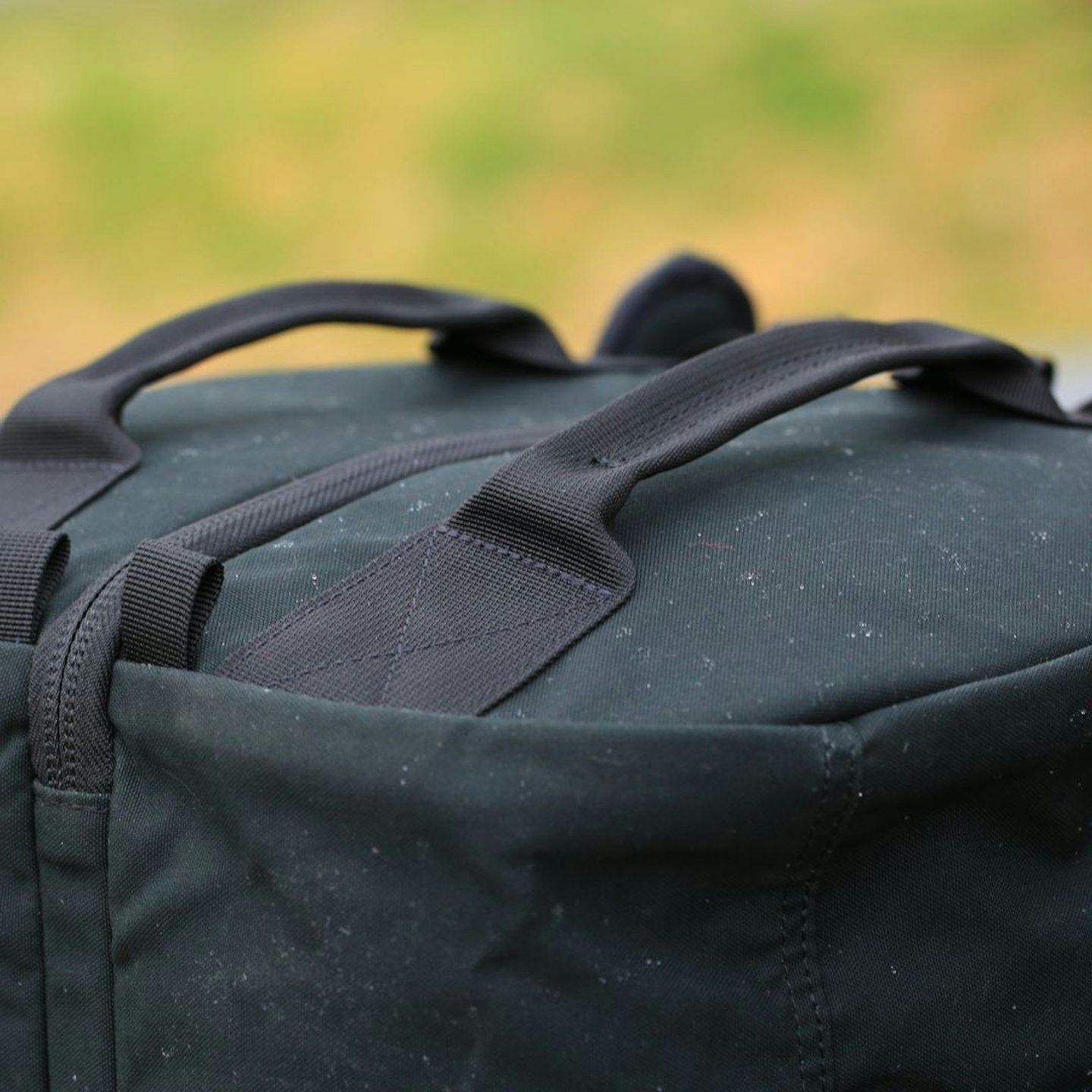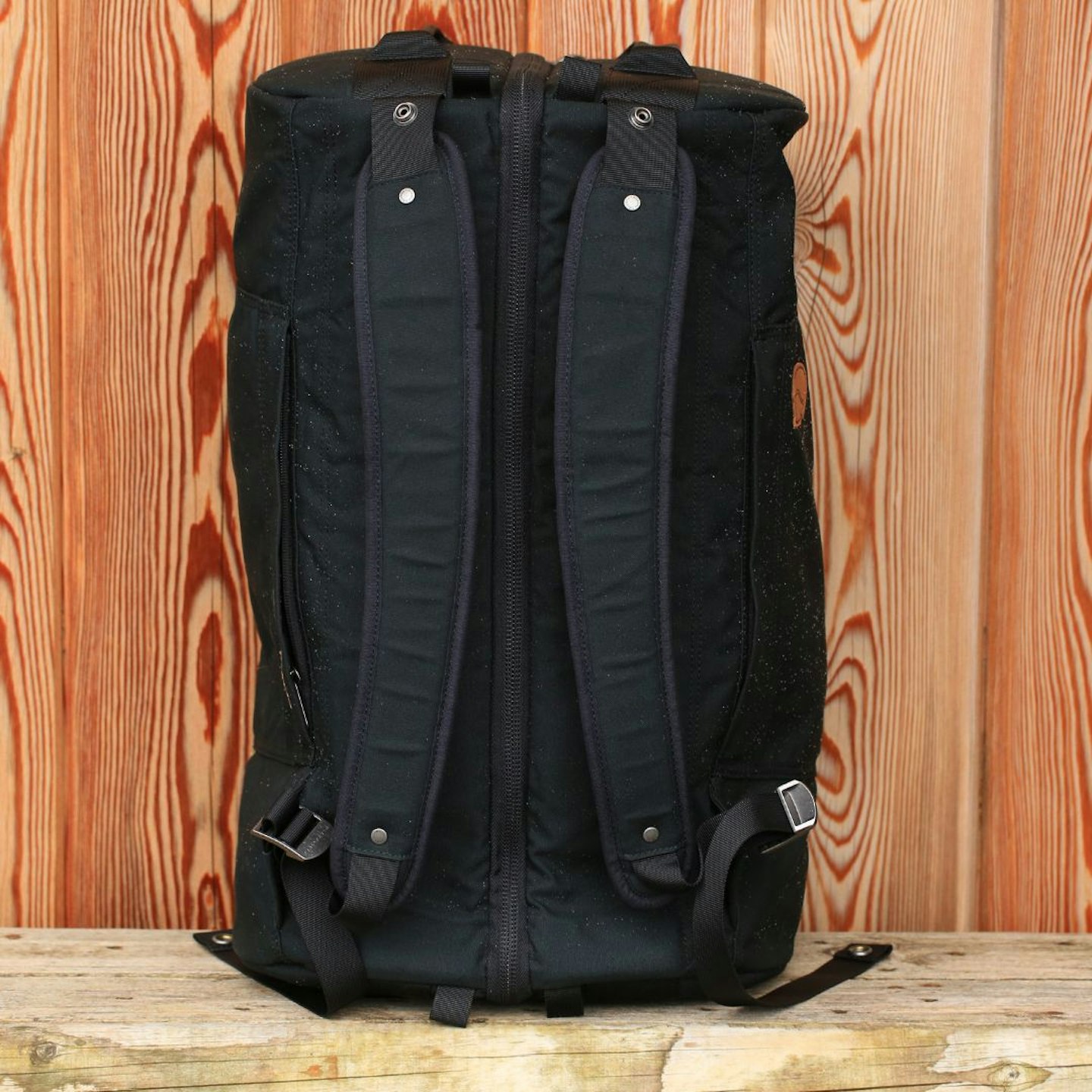Travel backpacks, designed specifically for lugging your gear to and from planes, trains and automobiles, come in all shapes and sizes. Surprisingly, they can often constitute a much trickier design brief than hiking packs, which simply need to balance weight, durability and comfort – while the best travel backpacks have a few more parameters to hit before they can be classed as effective.
To determine this efficacy, firstly you'll want to decide what you're using your travel backpack for. If you're planning on carrying large loads on your back across Southeast Asia on a gap-year style backpacking trip for example, you may be better off with a larger backpacking rucksack, with a comfortable, more sophisticated back system – plus a bumbag, or a cross-body bag for your valuables.

What are the best travel backpacks of 2025?
However, if you're out and about for a city break, work trip, or long weekend, simply shrinking that concept down and going for a smaller hiking pack might not be the best idea. While they'll often be comfortable to carry, many of these lightweight hiking daypacks don't come with essential travel features like laptop sleeves, passport pockets or compressions straps; all things to think about if you're tight on space and don't want to pay extra for a check-in bag.
Instead, choosing a pack specifically designed with locomotion in mind is a better bet for shorter trips where hills won't be much of an obstacle. The following bags all fit into standard carry-on sizers, and are compatible with overhead storage racks on trains and buses. They're also all fairly unfussy, with stowable straps, and enough features to be useful, but not overbearing.
Some are better suited to work trips away where you'll need to have your bag on you at all times, while some are perfect for long weekends where you need only carry it about for an afternoon while you wait to check into your accommodation. And of course, some do everything brilliantly and form the top picks in this category.
How we tested the best travel backpacks

All the above travel packs (and several more which didn't make the cut) have been used and abused by Fliss Freeborn, a digital writer for LFTO. Fliss used each pack over of a few months for her frequent weekend travels both abroad and around the UK. Fliss spends more time travelling than she does in her own house, so she knows more than most what makes a good bit of travel luggage.
Best travel backpacks reviewed:
The Osprey Sojourn 30L is a cleverly designed and well-thought through backpack, which seeks to solve a lot of potential problems for the hardened weekend traveller. Designed for anything between two to four days away, or as an auxiliary carry-on bag, it offers a great way to cart around a surprising amount of stuff, and it feels nearly as comfortable as a hiking backpack when in use.
The Sojourn’s real talent, however, is the fact it can expand into something which feels much larger than a 30L pack, but can cinch down to fit into the ‘free’ hand-luggage option on certain budget airlines, as well as tuck its own straps out of the way when it needs to.
It does have a particularly chunky feel to it, which some may like (we find it reassuring) but others may not. It’s wide and boxy as opposed to tall and sleek but that does allow you to get an awful lot of stuff in there, and crucially, see what it is you’ve packed with a single swipe of a lockable zip.
The Sojourn starts at £160 RRP (at the time of writing), which is expensive for a 30L backpack, but ultimately is in line with what Osprey charge for their products. For that price though, you do get quite a lot of bag packed into 30L, and because it's good quality it should last a very, very long time. With regular use – especially on budget airlines where you'd otherwise be paying for hand-luggage – it's a good investment for a piece of useful gear.
Pros
- Very comfortable
- Spacious
- Easy to pack and unpack
- Cinches down for smaller loads
Cons
- Expensive
- Slightly bulky
| Weight | 1.37kg |
| Volumes | 30, 46L, 65L |
| Materials | Recycled and bluesign apprived 460D nylon (main) and 1680D polyester (base) w/ PFAS-free DWR |
| Load capacity | Not stated |
The Lowe Alpine Escape Flight 36 travel backpack is a more minimal take on a mid-sized travel pack than other offerings – but has its own spartan charm, with a simplified, comfortable carry and plenty of uninterrupted space for gear.
It works well for most types of travel, fitting well in overhead luggage racks on trains and buses – and it's especially good at adapting to commuting too. It’s roomy, carry-on compatible for most reasonable airlines and crucially, pretty lightweight for the price.
In terms of price, £100 for a backpack isn't crazy, but it's not cheap as chips either. But we think the Lowe Alpine Escape Flight 36 offers excellent value for such a versatile bag, and due to its good build quality, that £100 will see you through many years of usage.
Lowe Alpine, who come under the same company as Rab, have got pretty good sustainability and ethics credentials – they're a carbon neutral company who are leaders in the fair-wear movement. They're also keen on fixing and repurposing gear, which means you can send your stuff back to them to be repaired, rather than buying a new item. That's a big plus for us!
Read our full review of the Lowe Alpine Escape Flight 36 here
Pros
- Very spacious
- Lightweight
- Easy to pack and unpack
Cons
- Minimalist design may not suit everyone
- Less comfortable with heavier loads
| Weight | 1kg |
| Volumes | 36L, 40L (Escape Flight Pro) |
| Materials | 210D Wave RS fabric with 600D reinforcements |
| Load capacity | Not stated |
The Eagle Creek Tour 40 is a great all-round travel bag, pipped only to the top spot in this list by the Osprey Sojourn, which offered just a little bit more on the durability side of things. They are both, however, the same price, and both use recycled materials for good sustainability credentials.
Where the Tour 40 might be the better bet for you is if you want a lighter bag and the freedom to decide your own packing space. At nearly 200g lighter than the Sojourn, the Tour is a wide, spacious pack with suitcase style opening which means you can get a whole load of stuff in without the faff of padding or compartments getting in the way.
It also has the ability to expand and contract without the use of straps: the Tour 40 has an inch wide compression zip running around the outside of it for those oversized loads.
But while the tour 40 is business at the front (sleek, minimalist design with only one pocket to speak of), it’s a party at the back, with a modern, padded harness system which goes above and beyond most of the travel packs we see. Not only is it adjustable to size and height, it also comes with a built-in rain cover, and everything is completely stowable when needed.
The padding on the straps is substantial for the most part, although the hip belts are somewhat lacking - but hey, we’re lucky we’ve even got hip belts so let’s not get ahead of ourselves.
The only other thing that’s a drawback about the Tour 40 is, like the Osprey, the price. £170 is not cheap for a travel pack, but this does seem promisingly durable, using ripstop polyester for the most part and with good quality zips and buckles used.
Pros
- Comfortable carry due to adjustable back length
- Spacious
- Raincover included
- Cinches down when not in use
Cons
- Expensive
- Strap system can be confusing at first
| Weight | 1191g |
| Volume | 40L (SM-ML) |
| Materials | 100% Recycled Polyester Diamond Ripstop<br>100% Recycled 600D Polyester |
| Load capacity | Not stated |
Decathlon have long offered good value for money when it comes to outdoor gear, and they’ve been true to form this time again with the Organiser 500, a 40L travel bag which ticks nearly all the boxes.
It’s a suitcase-style bag, with two meshed halves. We like the space configuration for the most part, and can see why having a separate shoe pocket is a good idea – but can also appreciate that others might not want their packing to be pre-dictated.
That said, there is plenty of room for everything here and the travel Organizer 500 is surprisingly spacious, taking up to a working week’s worth of gear for a city break quite happily.
There is an external laptop pocket, a handy stash pocket in the top for valuables and a key hook, which helps keep peace of mind. The material is a wipe-clean polyester, but as for the sustainability credentials this is where Decathlon’s offerings tend to slip sideways a little.
There’s no mention of anything in the way of recycled materials for the Organiser 500; a natural dye has been used but other than that, there’s little going for it in terms of ethics except perhaps its durability.
To be very fair to Decathlon, this pack is designed to last. It’s rugged, feels very durable, and comes with a 10 year warranty. And at just under £60 that’s a helluva bargain.
Pros
- Good value
- Spacious
- Cinches down when not in use
- Great features
Cons
- Very heavy
- Overly compartmentalised for some
| Weight | 1.3kg |
| Volumes | 40L |
| Materials | Polyester |
| Load capacity | Not stated |
Berghaus have been making backpacks for a long time. As a brand, they value practicality over fashion, and nowhere could this be more accurate than in the Berghaus Trailbyte 30L travel pack.
Designed with longevity in mind, it’ll do basically everything you want it to do as an everyday bit of kit – but it's nothing mind-blowing in terms of style or design.
While the Trailbyte is indeed suitable for shorter walks and outdoor excursions, it’s generally more at home on the 9-5 as a commuter pack – but one that’ll happily take you for a couples of nights in a hotel too.
It’s not as spacious or travel-forward as some of the other packs on offer, but it’s compact, reasonably lightweight, comfortable to carry and will fit everything you could possibly want for traveling to and from something like a work conference. It’s also smart enough, with space for several A3 files, to be a more comfortable alternative to a briefcase.
Pros
- Smart
- Comfortable carry
- Lots of room for laptops and other tech
Cons
- Not large enough more than two nights away
- Lack of back and shoulder ventilation
| Weight | 878g |
| Volume | 30L |
| Materials | 210D Wave RS fabric with 600D reinforcements |
| Load capacity | Not stated |
The North Face Hotshot is similar to the Berghaus Trailbyte in that it's also a commuter-forward pack, but it doesn't have a designated external laptop sleeve, so is lighter and zippier.
There is an internal laptop pocket, but it’s not huge so if your device is on the more chunky end of things, beware. The hotshot also offers a good amount of storage for stationery and valuables in the front pocket, and the larger compartment is of a fairly decent size for weekend trips if you’re a light packer.
However, where the Hotshot really excels is comfort. It's just as nice over long distances as more streamlined hiking bags, which make city travel a breeze. It’s also on the lighter end of the travel packs we’ve tested, which makes sure it doesn’t hinder internal packing space with unnecessary bulk.
With that in mind, the Hotshot can probably sneak through Ryanair and EasyJet's "free" luggage sizers, saving you money on your trip.
Also, it's one of the only travel bags to come in a glaringly hot pink colour, which makes a great change from the dull blacks and greys of the other other bags. It's certainly more than Kenough for us.
Pros
- Great for everyday use
- Brightly coloured
- Two water bottle pockets
Cons
- Not large enough for more than a weekend
- No designated laptop space
| Weight | 1160g |
| Volume | 30L (One size) |
| Materials | 400D Nylon With Non-PFC Durable Water-Repellent (Non-PFC DWR) Finish |
| Load capacity | Not stated |
Obviously it’s stylish. Obviously it’s expensive. So obviously it’s Fjallraven.
The SplitPack is a bit of a bridge between a duffel and a suitcase. It’s certainly one of the less technical bags on offer here, but the unique packing system actually offers a great balance between structured packing and plenty of space.
The mesh membranes between the halves divide gear evenly so it’s not all tumbling about, but there’s plenty of room in each hemisphere for multiple pairs of shoes and several outfits for even up to a week away.
Originally, we had concerns about where tech such as laptops or tablets might go. However, because of the bag’s design, when they’re slotted into the double mesh pocket on one of the sides, they’re completely protected as it sits in the middle of the bag when worn. The zips are lockable easily too.
The Splitpack uses durable canvas material made from organic cotton and recycled polyester. It’s water resistant and quick-drying, but for the most part, you’ll be using this bag in cities rather than on the hill – not least because the carrying system is on the more minimalist side.
Yep, that’s where the Splitpack falls down rather a lot in comparison to the more technical bags: even though it's very stylish, sustainable and spacious, we didn’t like the fact that the straps don’t adjust a huge amount, there’s no designated back panel, and no hip or sternum straps to speak of.
If you’re only going to and from taxis and planes, then the Splitpack could be a viable option for you (it's hugely hardwearing and rather beautiful) but if you’re going to do much lugging about of your kit over longer distances on crowded public transport, then you may be better off looking elsewhere.
Pros
- Stylish
- Spacious
- Easy to pack and unpack
- Durable
Cons
- Expensive
- No proper back system
- No specific laptop storage
| Weight | 1150 g |
| Volume | 35L, 55L |
| Materials | G-1000® HeavyDuty: 65% polyester (recycled), 35% cotton (organic) |
| Load capacity | Not stated |
What to look for in a travel pack

Knowing what to look for before buying a travel backpack depends mostly on what it's going to be used for, but that said, there are a few constants to bear in mind – whether or not you're going off for months at a time, or just a few days.
Materials

You'll want something that is tough enough to be thrown about a bus, taxi, ferry or other mode of transport – and possibly sat on at an airport – so going for something on the heftier end might not be a bad shout. We like toughened canvas, but ripstop nylon is great too.
Some amount of padding, especially for laptop and tablet housing is a must as well, but not so much that it impedes on useful packing space. This is not really the place for state-of-the-art gossamer lightweight materials, but that said, your pack shouldn't weigh a tonne either as that'll impact how much stuff you can get in it and still be within the weight limit if you're using it as a carry-on.
Features

In general, a travel pack should have a separate handy compartment for valuables such as phones, wallets or passports, which should be easily accessible to you – but crucially difficult to get to for others.
Lockable zips are also something to look for, especially if you'll be travelling on busy public transport in areas known for pickpocketing. You can buy handy luggage locks on Amazon.
 Amazon
AmazonOther features, including internal storage space, depend upon how exactly you like to pack. Many of the backpacks in the list above have cavernous, empty interiors which could benefit from being used with packing cubes, helping to organise larger spaces and compress your items so you can fit more in.
Other packs have built-in storage solutions for different bits and bobs – fine if you're only ever packing shoes and clothes but this could be a little restrictive if you're wanting to cart around 15kg of charcuterie, or other strangely non-compressible objects.
 Amazon
AmazonStraps
The straps on a travel pack can make or break the experience, especially if you're having to carry it through museums and other tourist attractions in a city all day.
It's why we at LFTO prefer packs over holdalls or duffels for city travel. They tend to be designed with ergonomics in mind more so than duffels, which although can often be carried like a backpack, are better for car-based adventures or staying at basecamp during climbing expeditions.
If you know you're going to be in and out of a lot of public transport, you should looks for stowable straps too: they're less likely to get caught in doors or catch on things in tight spaces. It also makes the travel pack more easily storable when not in use.
What capacity backpack do I need for my trip?

It very much depends on how you pack, what activities you'll be getting up to and what facilities you have at your accommodation. If you're a savvy space saver going somewhere which already has bedding and toiletries, you an get away with 30 litres for a long weekend quite easily. If you're a little bit more of an over-packer, or need spare shoes, extra warm clothing or food, taking 35-40L for around three days is advisable. We find that if it's a sunny city trip for 4-5 days, 40 litres is absolutely fine.
Is a 40L backpack big enough for longer travelling?
Yes, often quite comfortably if you're clever about what you pack. Even on longer trips – especially if you're going somewhere hot where you can take quick-drying lightweight baselayers which pack down to next to nothing – a 40L backpack can often offer the best travel solution. Usually, 40L is small enough to count as hand-luggage, which makes air travel much more efficient, and enables you to whisk yourself on and off a plane in no time.
Is a 50L backpack too big for carry-on?
In general, yes, 50L will be too large at full capacity. You can always get a travel pack of a larger size and use compression straps to cinch it down, but opting for something smaller as a carry-on bag is a better bet. The products we've reviewed here are all 30-40L, which will happily fit in most carry-on sizers.
Which brand is best for a travel backpack?

Any of the above brands are a high on quality, but if you're unsure, picking a brand that only specialises in rucksacks and bags (for example, Lowe Alpine or Osprey) is a great bet. As usual, you tend to get what you pay for with travel packs, especially as they're probably going to see a fair amount of abuse in their lifetime.
About the author

Fliss Freeborn is a writer and gear tester for Live For The Outdoors. During her time at university, she spent considerably more days in a tent in the Scottish Highlands than she did in the library, which she highly recommends as a study strategy.
Fliss also believes that life is too short to eat bad food outdoors, and that cooking good scran while in the hills is easier than you might think with the right kit and some forward planning – yes, you can always do better than a pot noodle.



